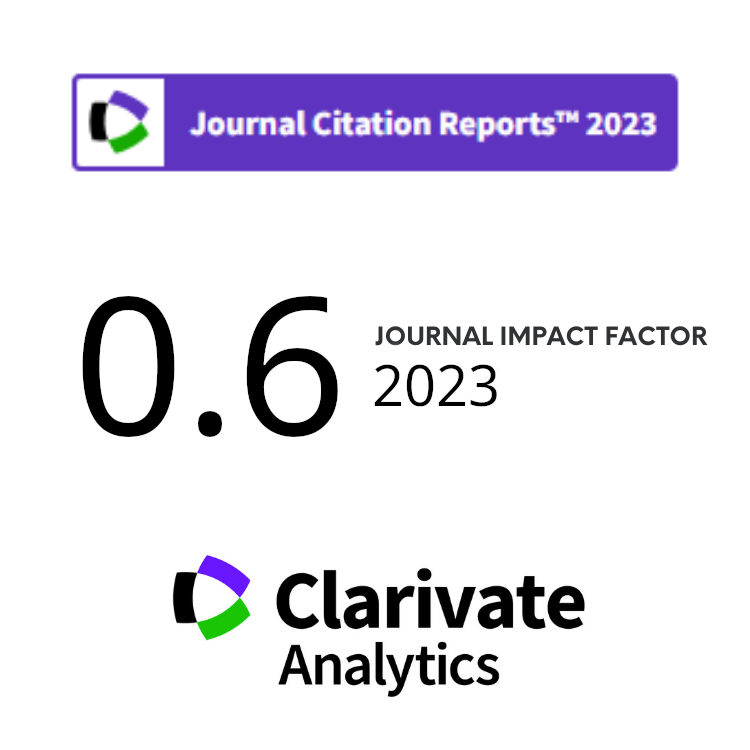Elemental Mapping and Quantities in Different Soybean Seed Colors Using Micro X-Ray Fluorescence and Their Correlations with Germination
Abstract
Micro X-ray fluorescence (μ-XRF) possesses a powerful analytical technique able to detect macro- and micro-elements. Each plant variety has a unique elemental composition and important role in the germination process. The aims of this study were to (1) map the elements and quantities in the soybean seed coat and endosperm, (2) investigate how the various elements might mediate the inter-relationship or correlation between elements within soybean seed genotypes with different seed coat colors, and (3) investigate that the targeted morphological characteristics especially in germination would be affected by seed elements. A μ-XRF technique was used for the elemental analysis and quantification. Three genotypes of Indonesian soybean were used in this study: greenish, black, and yellowish. In this study, we found that the silicon (Si) and magnesium (Mg) elements have a significant correlation. The high quantity of Si element in the embryo axis has a positive correlation with root length. The high quantity of Mg element which is evenly distributed on the endosperm has a positive correlation with normal germination. Si and Mg elements in the seeds have a negative correlation with imbibition water absorption. Based on the comparison between the three genotypes, the black genotype was superior in terms of germination and higher Si and Mg elements. Thus, the Si and Mg elements can be used as a reference in determining superiority of genotypes at the germination stage.
Keywords
Full Text:
PDFReferences
L. B. M. Mojica, M. Berhow and M. E. Gonzalez, Food Chem. 229 (2017) 628.
M. Ghani, K. P. Kulkarni, J. T. Song et al., Plant Breed. Biotechnol. 4 (2016) 398.
A. Kahraman, J. Elem. 22 (2016) 55.
K. Chojnacka and A. Saeid, Recent Advances in Trace Elements, Wiley Blackwell, New Jersey (2018) 11.
A. Khosravi and S. H. Razavi, J. Funct. Foods 81 (2021) 104467.
J. Lee, Y. S. Hwang, S. T. Kim et al., Food Chem. 214 (2017) 248.
H. Jo, J. Y. Lee, H. Cho et al., Agron. 11 (2021) 581.
B. S. Gebregziabher, S. Zhang, S. Ghosh et al., Plants 11 (2022) 848.
F. P. Mawasid, M. Syukur, Trikoesoemaningtyas et al., Curr. Appl. Sci. Technol. 23 (2023) 2808.
K. Wibisono, S. I. Aisyah, W. Nurcholis et al., Agrivita, J. Agric. Sci. 44 (2022) 82.
C. Wijewardana, K. R. Reddy and N. Bellaloui, Food Chem. 278 (2019) 92.
M. W. Vasconcelos, T. E. Clemente and M. A. Grusak, Front. Plant Sci. 5 (2014) 112.
B. M. Waters and R. P. Sankaran, Plant Sci. 180 (2011) 562.
M. F. Cotrim, J. B. Silva, F. M. S. Lourenço et al., PLoS ONE 14 (2019) e0222987.
L. Luo, Y. Shen, Y. Ma et al., X-Ray Spectrom. 48 (2019) 1.
E. S. Rodrigues, M. H. F. Gomes, N. M. Duran et al., Front. Plant Sci. 9 (2018) 1.
X. Feng, H. Zhang and P. Yu, Crit. Rev. Food Sci. Nutr. 61 (2021) 2340.
M. B. McDonald, Seed Germination and Seedling Establishment, American Society of Agronomy, Madison (1994) 37.
M. Zembala, M. Filek, S. Walas et al., Plant Soil 329 (2010) 457.
D. S. Bush, Annu. Rev. Plant Physiol. Plant Mol. Biol. 46 (1995) 95.
V. G Ladygin, Russ. J. Plant Physiol. 51 (2004) 28.
J. Pierce, Plant Physiol. 81 (1986) 943.
R. Tajima and Y. Kato, Field Crops Res. 121 (2011) 460.
H. Dama, S. I. Aisyah, Sudarsono et al., Atom Indones. 48 (2022) 107.
S. J. Davies, H. F. Lamb, S. J. Roberts, Micro-XRF Core Scanning in Palaeolimnology: Recent Developments, Springer Science and Business Media, Dordrecht (2015) 189.
S. L. Z. Romeu, J. P. R. Marques, G. S. Montanha et al., Microchem. J. 164 (2021) 106045.
Y. Moriyasu, C. Fukumoto, M. Wada et al., Foods 10 (2021) 841.
S. C. Karatas, D. Günay and S. Sayar, Food Chem. 230 (2017) 182.
S. Malle, M. Morrison and F. Belzile, BMC Plant Biol. 20 (2020) 419.
J. N. A. Lott, V. Cavdek, J. Carson, Seed Sci. Res. 1 (1991) 229.
A. K. Bledzki, A. A. Mamun and J. Volk, Compos. Part A Appl. Sci. 41 (2010) 480.
T. Řezanka and K. Sigler, Biologically Active Compounds of Semi-metals, Elsevier Science, Amsterdam (2008) 835.
McDonald MB. Seed Quality Assessment, Seed Sci. Res. 8 (1998) 265.
L. A. Larson, Plant Physiol. 43 (1968) 255.
G. G. Rowland and L. V. Gusta, Can. J. Plant Sci. 57 (1977) 401.
S. H. Duke and G. Kakefuda, Plant Physiol. 67 (1981) 449.
E. W. Simon and R. M. R. Harun, J. Exp. Bot. 23 (1972) 1076.
A. Nelwamondo and F. D. Dakora, New Phytol. 142 (1999) 463.
Z. G. Guo, H. X. Liu, F. P. Tian et al., Aust. J. Exp. Agric. 46 (2006) 1161.
L. Signora, I. DeSmet, C. H. Foyer et al., Plant J. 28 (2001) 655.
F. D. Dakora and A. Nelwamondo, Funct. Plant Biol. 30 (2003) 947.
Y. Liang and J. M. Harris, Am. J. Bot. 92 (2005) 1675.
F. Steiner, A. M. Zuffo, A. Bush et al., Pesqui. Agropecu. Bras. 48 (2018) 212.
S. Varnagiris, S. Vilimaite, I. Mikelionyte et al., Process. 8 (2020) 1575.
Y. Ceylan, U. B. Kutman, M. Mengutay et al., Plant Soil 406 (2016) 145.
S. Shinde, P. Paralikar, A. P. Ingle et al., Arabian J. Chem. 13 (2020) 3172.
V. K. Anand, A. R. Anugraga, M. Kannan et al., Mater. Lett. 271 (2020) 127792.
DOI: https://doi.org/10.55981/aij.2023.1300
Copyright (c) 2023

This work is licensed under a Creative Commons Attribution-NonCommercial-ShareAlike 4.0 International License.











